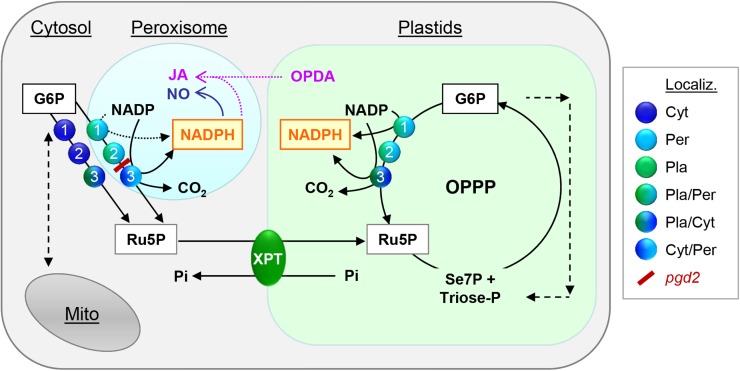Figure 9.
The OPPP as NADPH source in plastids and peroxisomes. The scheme depicts possible compartmentation of OPPP reactions in Arabidopsis. Glucose 6-phosphate dehydrogenases (step 1) converts glucose 6-phosphate (G6P) to NADPH plus 6-phosphogluconolactone, which is used by 6-phosphogluconolactonases (step 2) to yield 6-phosphogluconate, the substrate of 6-phosphogluconate dehydrogenases (step 3). In this last step of the irreversible OPPP branch, another NADPH, ribulose 5-phosphate (Ru5P), and CO2 are produced. Ru5P (or xylulose 5-phosphate) can be exchanged for orthophosphate (Pi) via pentose-phosphate transporter XPT (Eicks et al., 2002) in the inner plastid membrane. NADPH produced by the OPPP in peroxisomes may sustain critical levels of (NO) and/or Jasmonic acid (JA). For the latter, OPDA (12-oxophytodienoic acid) has to be imported from plastids. NO and JA play important roles during fertilization and seed development. For more clarity, NADPH produced in the cytosol is not shown. Abbreviations: Cyt, Cytosolic; Per, peroxisomal; and Pla, plastidial localization. Dual targeting is indicated by mixed color symbols, the pgd2 block is high-lighted in red.

